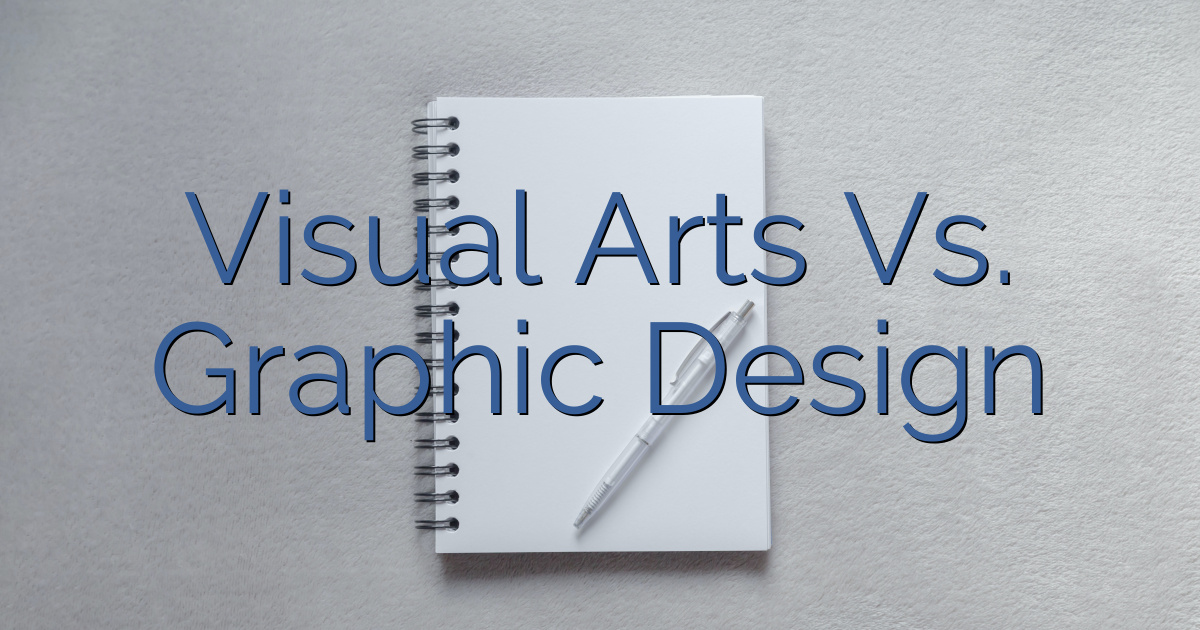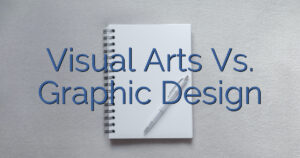 Looking to express your creativity through art? Curious about the differences between visual arts and graphic design? Well, buckle up because we’re about to take you on a journey through these two exciting majors.
In this article, we’ll delve into the curriculum, skills developed, career opportunities, and salary potential of both disciplines. So, whether you’re a budding artist or a design enthusiast, get ready to explore the fascinating world of visual arts versus graphic design.
It’s time to unleash your artistic potential and make an informed choice!
Looking to express your creativity through art? Curious about the differences between visual arts and graphic design? Well, buckle up because we’re about to take you on a journey through these two exciting majors.
In this article, we’ll delve into the curriculum, skills developed, career opportunities, and salary potential of both disciplines. So, whether you’re a budding artist or a design enthusiast, get ready to explore the fascinating world of visual arts versus graphic design.
It’s time to unleash your artistic potential and make an informed choice!
Table of Contents
Key Takeaways
- Visual Arts focuses on artistic skills and personal expression, while Graphic Design emphasizes practical skills and visual communication.
- The curriculum in Visual Arts focuses on traditional art forms, while Graphic Design curriculum emphasizes digital design and software tools.
- Both Visual Arts and Graphic Design use project-based assessments, written assignments, and practical exams to evaluate students.
- Creativity is crucial in both disciplines, allowing for unique solutions in Visual Arts and visually engaging graphics in Graphic Design.
Overview of the two majors: Visual Arts and Graphic Design
If you’re considering majoring in either Visual Arts or Graphic Design, it’s important to understand the differences between the two. In terms of curriculum comparison, Visual Arts programs focus on developing artistic skills and exploring various mediums such as painting, drawing, sculpture, and photography. On the other hand, Graphic Design programs place a greater emphasis on digital skills, typography, branding, and visual communication. While both majors involve creativity, Visual Arts tends to be more open-ended and allows for more personal expression, while Graphic Design is more practical and industry-oriented. When it comes to job prospects, Visual Arts graduates often find careers as fine artists, art educators, or gallery curators. However, the job market can be competitive and income may vary. On the other hand, Graphic Design graduates have a wider range of opportunities in fields such as advertising, marketing, web design, and multimedia. The demand for skilled graphic designers is high, and the potential for stable employment and higher salaries is greater in this field. Ultimately, both majors offer unique paths and it’s important to consider your personal interests, skills, and long-term goals when choosing between Visual Arts and Graphic Design.Overview of the curriculum and coursework of the two majors
The curriculum and coursework of the two majors involve a wide range of creative projects and practical skills. In visual arts, the curriculum structure focuses on developing foundational skills in drawing, painting, sculpture, and other traditional art forms. Students are encouraged to explore different artistic techniques and experiment with various mediums. The coursework often includes art history, color theory, and visual composition. On the other hand, graphic design majors have a more structured curriculum that emphasizes practical skills development. Students learn about typography, layout design, branding, and digital software tools. The coursework also includes classes on user experience design and web design. Both majors offer opportunities for students to showcase their creativity through projects and assignments. The curriculum and coursework of visual arts and graphic design majors provide a solid foundation for individuals pursuing careers in the creative industry.Overview of coursework, assessments, and evaluation methods
You will be evaluated in both majors through a combination of project-based assessments, written assignments, and practical exams. The coursework structure in visual arts and graphic design aims to develop your skills and knowledge in a progressive manner. In visual arts, you will typically start with foundational courses that explore various mediums and techniques. As you progress, you will have the opportunity to specialize in areas such as painting, sculpture, or photography. On the other hand, graphic design coursework focuses on developing your skills in digital design, typography, and layout. Assessment methods in both majors are designed to gauge your understanding and application of concepts. Project-based assessments allow you to showcase your creativity and problem-solving skills, while written assignments assess your critical thinking and ability to articulate ideas. Practical exams test your technical proficiency in executing design projects. Overall, the coursework and assessment methods in visual arts and graphic design provide a comprehensive evaluation of your abilities in these fields.Comparison of Skills Developed: Creativity
Developing your creativity is a key aspect of both majors, as it allows you to think outside the box and come up with unique design solutions. In visual arts, creativity is vital in problem-solving. It enables artists to approach challenges from different perspectives and find innovative solutions. Whether it’s exploring new techniques, experimenting with materials, or pushing the boundaries of traditional art forms, creativity plays a crucial role in the artistic process. Similarly, in graphic design, creativity is essential in visual communication. Designers need to convey complex ideas and messages effectively through visual elements. They must think creatively to design visually appealing and engaging graphics that capture the attention of the audience. Creativity enables designers to find innovative ways to communicate information and evoke emotions through their designs. Here is a comparison of how creativity is utilized in problem-solving and visual communication in visual arts and graphic design:| Creativity in Problem Solving | Creativity in Visual Communication |
|---|---|
| Allows artists to find unique solutions to artistic challenges | Enables designers to create visually engaging graphics |
| Encourages experimentation and exploration of new ideas | Inspires innovative approaches to conveying information |
| Helps artists think outside the box and challenge traditional norms | Allows designers to think creatively about how to communicate complex ideas |
| Fosters the development of original and unique artistic styles | Encourages the use of visual metaphors and symbolism in design |
Comparison of Career Opportunities and Job Roles: Graphic Design Specializations
One popular specialization within the field is UX/UI design. It focuses on creating user-friendly and visually appealing interfaces for websites and applications. This specialization offers a variety of career opportunities, allowing you to work in different industries and sectors. Here are four graphic design specializations and the corresponding job roles that you can explore:- Branding and Identity Design: As a branding designer, you will create visual elements such as logos, typography, and color schemes to establish a brand’s identity and communicate its values.
- Packaging Design: Packaging designers are responsible for designing attractive and functional packaging for products. They consider factors like product safety, brand positioning, and consumer appeal.
- Motion Graphics Design: If you have an interest in animation and video production, you can specialize in motion graphics design. You will create moving visual elements for advertisements, films, and digital media.
- Web Design: As a web designer, you will create visually appealing and user-friendly websites. You consider factors like layout, navigation, and responsive design.
Comparison of Salary Potential: Job Market Trends
Now that you’ve explored the various specializations within graphic design, let’s dive deeper into the salary potential and job market trends in this field. Graphic design offers a wide range of opportunities, each with its own earning potential. When it comes to salary potential, job market trends play a significant role. The demand for graphic designers is expected to grow steadily in the coming years, as businesses continue to rely on visual communication to engage with their audience. As technology advances and new platforms emerge, the need for skilled graphic designers will only increase. In terms of earning potential, graphic design can be a lucrative career. However, it’s important to note that salaries can vary depending on factors such as experience, expertise, and location. Graphic designers who specialize in areas such as web design, user interface design, or motion graphics tend to have higher earning potential due to their specialized skills. Overall, with the right skills and experience, graphic design can offer a promising salary potential, especially in a job market that values creativity and visual communication.Similarities between the two majors: Fine Arts Integration
The integration of fine arts into both majors allows you to explore your creativity and express yourself through various mediums. This integration offers a unique opportunity to combine the technical skills of visual arts and graphic design with the expressive nature of fine arts. Here are four ways in which fine arts are integrated into these majors:- Incorporating drawing and painting techniques: Both visual arts and graphic design programs often include courses that focus on traditional fine arts techniques such as drawing and painting. These courses help you develop your artistic skills and provide a foundation for creative exploration.
- Exploring mixed media: Fine arts integration allows you to experiment with different materials and techniques, such as collage, printmaking, and sculpture. This interdisciplinary approach enables you to expand your artistic horizons and explore new ways of expression.
- Emphasizing concept development: Fine arts integration encourages you to think critically and conceptually about your work. It challenges you to explore ideas, concepts, and themes, and translate them into visual form. This process of exploration and expression enhances your ability to communicate visually.
- Fostering personal expression: Fine arts integration recognizes the importance of individuality and personal expression. It encourages you to develop your unique artistic voice and explore your own interests, passions, and experiences through your work. This emphasis on personal expression allows you to create art that is meaningful and authentic to you.
Is Graphic Design a Subset of Visual Arts?
Yes, graphic design is a subset of visual arts. Although they share similarities in creativity and aesthetics, graphic design primarily focuses on communication and problem-solving through typography, imagery, and layout. On the other hand, visual arts encompass a broader range of artistic expression, including painting, sculpture, and mixed media. Understanding the graphic design and web design differences can help in distinguishing their specific roles within visual arts.
Difference between the two majors: Fine Arts Integration
To fully understand the difference between these two majors, you should explore how fine arts integration is approached in each of them. In visual arts, fine arts integration focuses on the combination of traditional art techniques and contemporary digital tools. This allows artists to explore various mediums and create unique and expressive artworks. On the other hand, in graphic design, fine arts integration is centered around using artistic elements to communicate visually and effectively. It involves the use of typography, color theory, and composition to convey a message or evoke a specific emotion.| Visual Arts | Graphic Design |
|---|---|
| Emphasis on individual creativity | Focus on communication and problem-solving |
| Experimentation with various mediums | Utilization of design principles |
| Open-ended exploration of ideas | Clear objectives and constraints |

